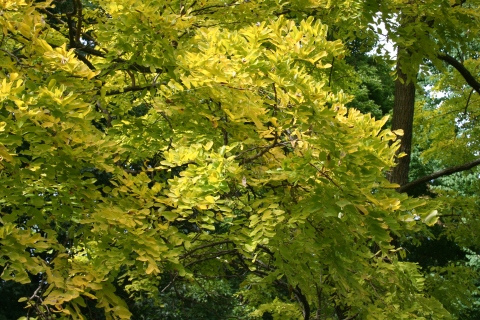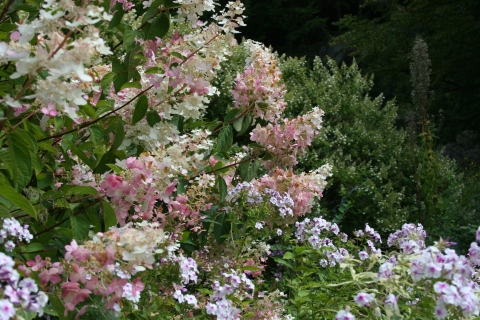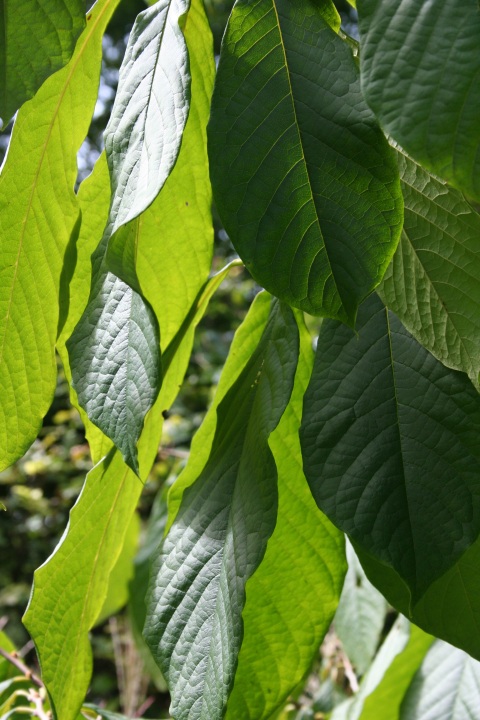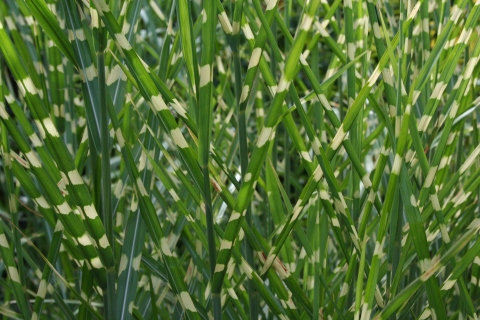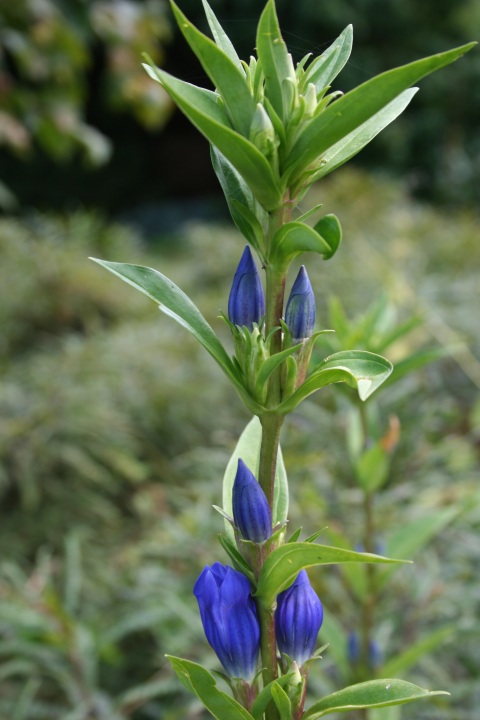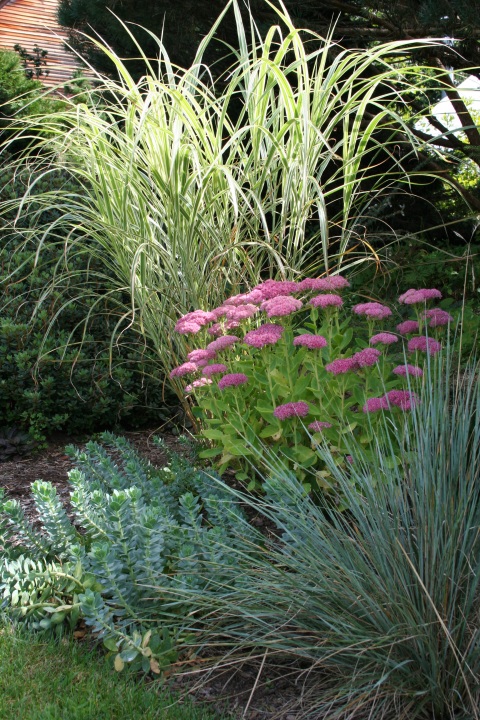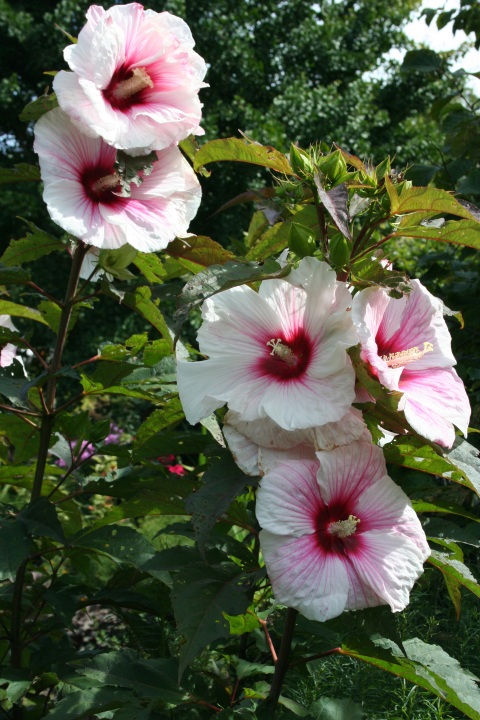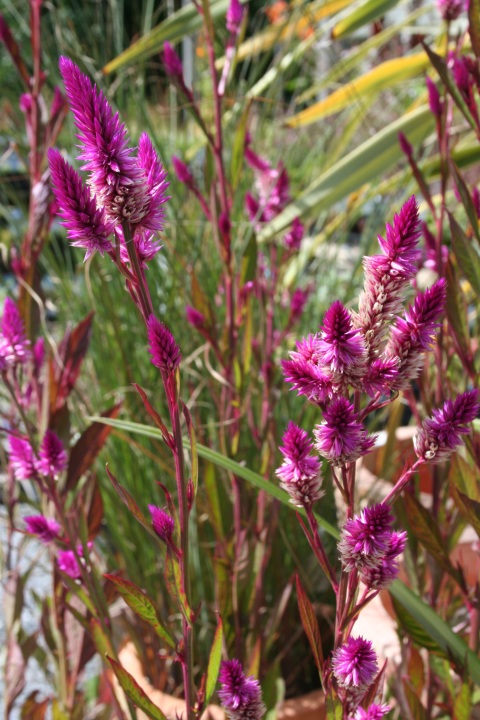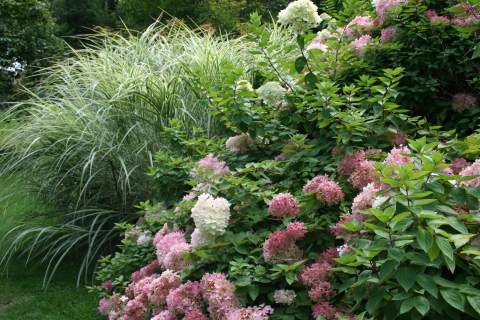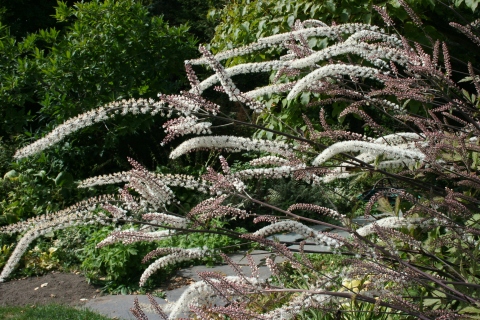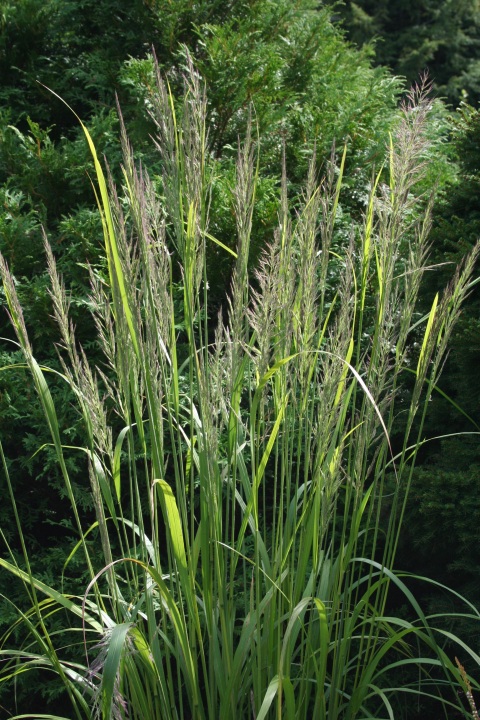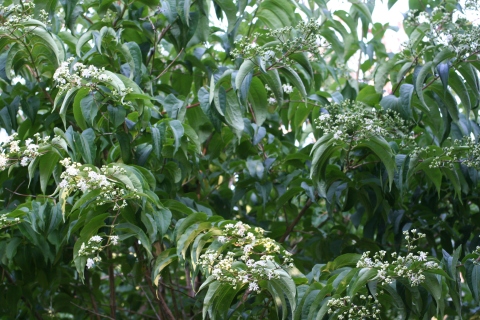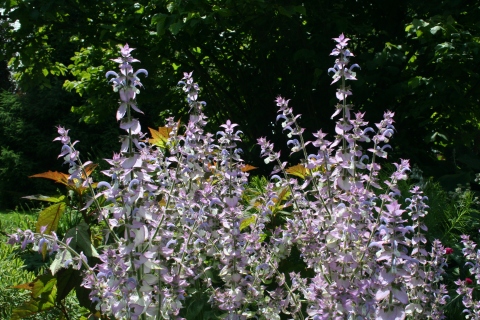fall color
September 28, 2009
Here are some images taken from the garden and the nursery. We have many things continuing to bloom: Phlox, Aster, Gentian, Heptacodium, Hydrangea, Rudbeckia, Hibiscus x ‘Kopper King’, various Echinacea, Platycoden, Tricyrtis, Chrysanthemum, Cimicifuga, Chelone, Ligularia ‘Desdemona’, Persicaria ‘Fire Tails’, Boltonia, Sedum, and Ornamental Grasses.
In addition to blooming, fall color is setting up. I love the garden this time of year. Many perennials have beautiful fall color, and berries start appearing on the deciduous hollies- Ilex verticillata.
In the blog entry right below this one- we’ve listed some of the garden chores you can do this fall. If you have time on your hands this fall, it will save you time next spring!
yes, winter’s coming, but fall comes first
September 11, 2009
We’ve woken up to some chilly weather recently. Though not near freezing, temps in the 40’s lets you know the seasons are changing! Is it too soon to make a fire in the wood stove? My partner, Ethan has taken up the clarinet- and this mornings’ practice has produced quite a few more squeaks that I attribute to the cold, so I may just have to warm the place up, for his clarinet practice of course!
The light is beautiful this time of year, (though driving when the sun is low creates problems), walking through the garden is a joy. Plants are illuminated in a way that shows them to their best advantage. The inflorescence of ornamental grasses catch the light particularly well. Changing colors in leaves are also backlit by this magnificent light. The color in conifers seems to deepen, and they begin to show their winter coloration. Hydrangeas are incredible this year- and have begun to turn that incredible deep pink with white.
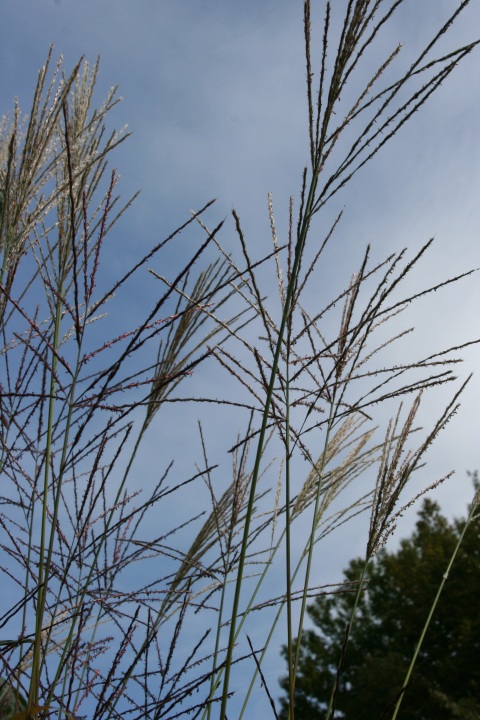
It’s also a time of year when we start looking ahead to next year. We’re able to forgive certain plants their poor performance and give them another chance next spring having great hopes that they will outperform our wildest expectations and that the weather will be glorious. With that, we’re delighted to cut back their speckled, mottled, moldy, and generally ugly foliage- “next year, babe!” It’s a relief.
My mind turns to organization in the fall. I’ve been looking at the four groupings of hazelnuts I have that form a one-sided allee down the central corridor of the garden. The story is that the family that lived at this house, before it was Rocky Dale Gardens, had planted them. They are one of the last vestiges of what was here before Rocky Dale Gardens was created. In Rocky Dale’s history, a giant mulberry was taken down to make way for the greenhouse, and several fruit trees were removed to make way for nursery and parking. Of course many other plants were displaced and removed for the creation of the display gardens.
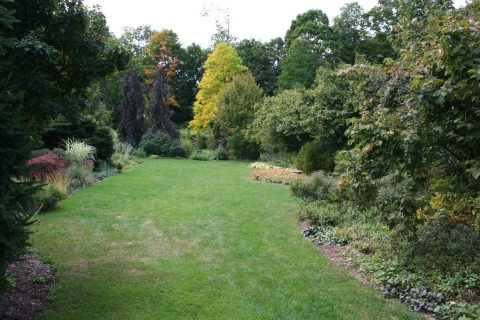
Back to my dilemma: the hazelnuts. I removed several clumps a few years back so that what remained did create a nice formal line or allee, and I was pleased with that. It opened up space in a garden that has become very crowded and had developed what I call “the green wall”, (when you can’t tell one plant from the other and the overall effect is a mass of foliage without definition or texture). Now I think I want to remove all the hazelnuts and create a long border that may be even more formal, but will give us the opportunity to show off a greater variety of plants. Of course, that involves a retaining wall and leveling the ground, and on and on- big project. So I thought of starting with the first lobe of hazelnuts- taking them out and putting a dent in the “green wall”. We’ll see if I have the heart to do this as the bluejays really go for the hazelnuts this time of year.
Part of my problem is I go from one project to the other without really getting them done. My “garden in the ledges” is still waiting for attention, but I fenced it off this year because I knew I wouldn’t have time for it. I could go back to that, and give the hazelnuts a reprieve, but that wouldn’t be half as much fun because I’ve already envisioned it and it’s just work now.
That’s what fall is about- envisioning and generating ideas for the future- because you can start seeing the bones of your garden and the experience of what worked and what didn’t is fresh in your mind. I’ll take off my designer hat and start pulling weeks and attending to fall chores. Maybe this winter I can get out the chain saw!
Fall- Hydrangeas and Grasses predominate…
September 1, 2009
what’s blooming…
July 12, 2009
We are still in the transition between spring and summer flowering. There are lots of plants blooming this time of year that we carry in the nursery but that we don’t have in the garden, so I thought I’d touch on some of those in this posting as well as some of the things happening in the gardens here at Rocky Dale. I hope you find these posts useful as you create or enhance your own gardens.
| Bloom calendar | Rocky Dale Gardens | July 12 209 |
| Perennials | ||
| Ending | In Full Bloom | Beginning |
| Campanula | Achillea | Agastache |
| Delphinium | Alcea | Cimicifuga |
| Dianthus | Astilbe | Crocosmia |
| Dicentra | Astilboides | Echinacea |
| Digitalis | Astrantia | Echinops |
| Dracocephalum | Calamagrostis | Eupatoruim |
| Geranium | Clematis | Gaillardia |
| Penstemon | Corydalis lutea | Goniolimum |
| Salvia | Digitalis | Heliopsis |
| Erigeron | Hemerocallis | |
| Eryngium | Liatris | |
| Filipendula | Ligularia | |
| Heuchera | Lilium | |
| Hosta | Monarda | |
| Leontepodium | Perovskia | |
| Leucanthemum | Phlox maculata | |
| Lychinis chalcedonia | Phlox paniculata | |
| Lychnis coranaria | Rudbeckia | |
| Lysimachia ciliata | Sedum | |
| Nepeta | ||
| Oenothera | ||
| Persicaria polymorpha | ||
| Platycoden | ||
| Potentilla ‘Arc-en- ciel’ | ||
| Salvia sclarea ‘Turkistanica’ | ||
| Semperviron | ||
| Spigelia | ||
| Stachys monnieri ‘Hummelo’ | ||
| Synanchium | ||
| Talium | ||
| Thalictrum | ||
| Verbascum | ||
| Veronica | ||
| Woodies | ||
| Ending | In Full Bloom | Beginning |
| Cornus kousa | Cotinus | Aesculua parviflora |
| Philadelphus | Diervilla | Clethra |
| Physocarpus | Genista | Hydrangea paniculata |
| Syringa reticulata | Hydgrandea serrata | |
| Weigela | Hydrangea macrophylla | |
| Hydrangea paniculata ‘Quick Fire’ | ||
| Hydrangea petiolaris | ||
| Hypericum | ||
| Potentilla | ||
| Rhododendron viscosum | ||
| Rhododendron ‘Weston’s Innocence’ | ||
| Rosa | ||
| Sambucus | ||
| Schizophragma hydrangeoides | ||
| Sorbaria | ||
| Spiraea bumalda and japonica | ||
| Stephanandra | ||
| Stewartia | ||
| Viburnum nudum ‘Brandywine’ | ||
| Viburnum plicatum ‘Summer Snowflake’ |


































